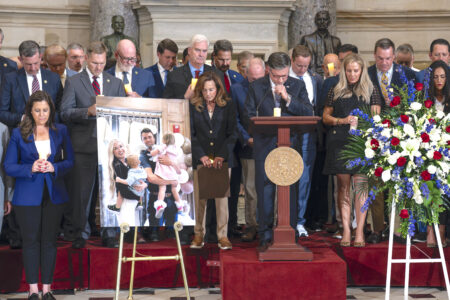Panel: EMS endangered in Pennsylvania
Emergency services are in demand in Pennsylvania, yet the people who provide them are struggling to keep their organizations afloat while those tasked with overseeing them at the local government level search for solutions to a growing crisis.
A panel representing a variety of structural models spoke before the Pennsylvania State Association of Township Supervisors Wednesday, offering insight on how they’ve each managed to fund and maintain the necessary emergency services for their communities.
“That’s the thing about EMS. If you’ve seen one, then you’ve seen one,” said Robert Hotchkiss, CEO and EMS Chief at Southern Chester County EMS, or SCCEMS.
His organization got its start providing Advanced Life Support, or ALS, services as a subsidiary of the Southern Chester County Medical Center in 1983. Since its inception, SCCEMS has grown to provide services to 17 municipalities, and the hospital that once supported it has closed.
Loss of hospital support left the unit with a funding challenge echoed by all the EMS providers present. How do you maintain services when billing for them doesn’t begin to cover their cost and taxpayers are weary at the notion of additional demands?
Most EMS departments need to have a paid staff at the ready to be dispatched to calls at any hour of the day.
The Municipal Emergency Services Authority, or MESA, a regionalized system in Lancaster County, has found a formula that works for them by billing residents, townships, and businesses in their service area with an annual fee. For individual homeowners, that number is $85, less than a streaming service subscription.
They came to the number by looking at how much of their costs are covered by insurance, what they needed to make up, and what percentage of their call volume came from different circumstances, like private residences, nursing homes, roadside, or businesses. This has allowed them to charge non-profit organizations which don’t support services through taxes. Those organizations include most schools and nursing homes.
Peter Gonze is the chair of the Paradise Township Board of Supervisors. In his rural, resort-heavy region of the Poconos, he says 60% of calls are Medicaid and Medicare patients. With Medicare, he says, sometimes they break even on a call. With Medicaid, they lose money every time. Even private insurance leaves them wanting.
To make up the difference, they apply for grants and engage in fundraising efforts, just as the state’s volunteer fire service does. Many are saying that it isn’t enough, and it shouldn’t be a part of the job.
“The training that our emergency service providers, our firefighters, our police have to go through is unbelievable. I don’t think that they need to be selling chicken barbecue tickets,” said Debra Dupler, MESA board chair.
The Center Square asked panelists what legislative issues the state could prioritize to help EMS find stable ground again. They agreed without hesitation that Medicaid reform was a major priority. Though Medicaid is a federal program, the state has the authority to set reimbursement rates and payment methods.
Asked what will happen to EMS in the state if Medicaid cuts are made at the federal level, Gonze said, “It will be devastating.” Given the state’s demographic challenges, the vast majority of calls are coming from older Pennsylvanians who use public insurance programs.
Hotchkiss said there’s a growing trend in EMS for paramedics working with healthcare companies to evaluate non-emergency cases with older adults at home, limiting unnecessary transports and hospital admissions. This allows emergency responders to lower their call volume and focus on life-saving services.
Some EMS services associated with hospitals and healthcare systems, however, spend so much time transporting patients that they aren’t available for dispatch. That’s when mutual aid agreements between companies come in and neighboring services respond. But it isn’t always a fair exchange. Dupler says MESA sees a twelve to one ratio in responding to its neighbors calls, and she doesn’t see that changing without lawmakers getting behind reform.
Another area the legislature could assist with is payment methods. Currently, the person who receives emergency services receives payment from their insurance provider, which they are expected to then use to pay their EMS bill. Unfortunately, EMS providers say many do not.
“It’s basically theft of service,” said Steve Allaband, New Garden Township Supervisor and board member. “They could change the law so that the check would go to the provider instead of the patient.”
Though the structure of the commonwealth often causes local governance to chafe at the idea of state interference, adjustments like these could help the state carry some of the weight that’s been left on local shoulders. Even while embracing creative solutions, EMS organizations are saying loudly and clearly that they can’t survive without a lifeline.




